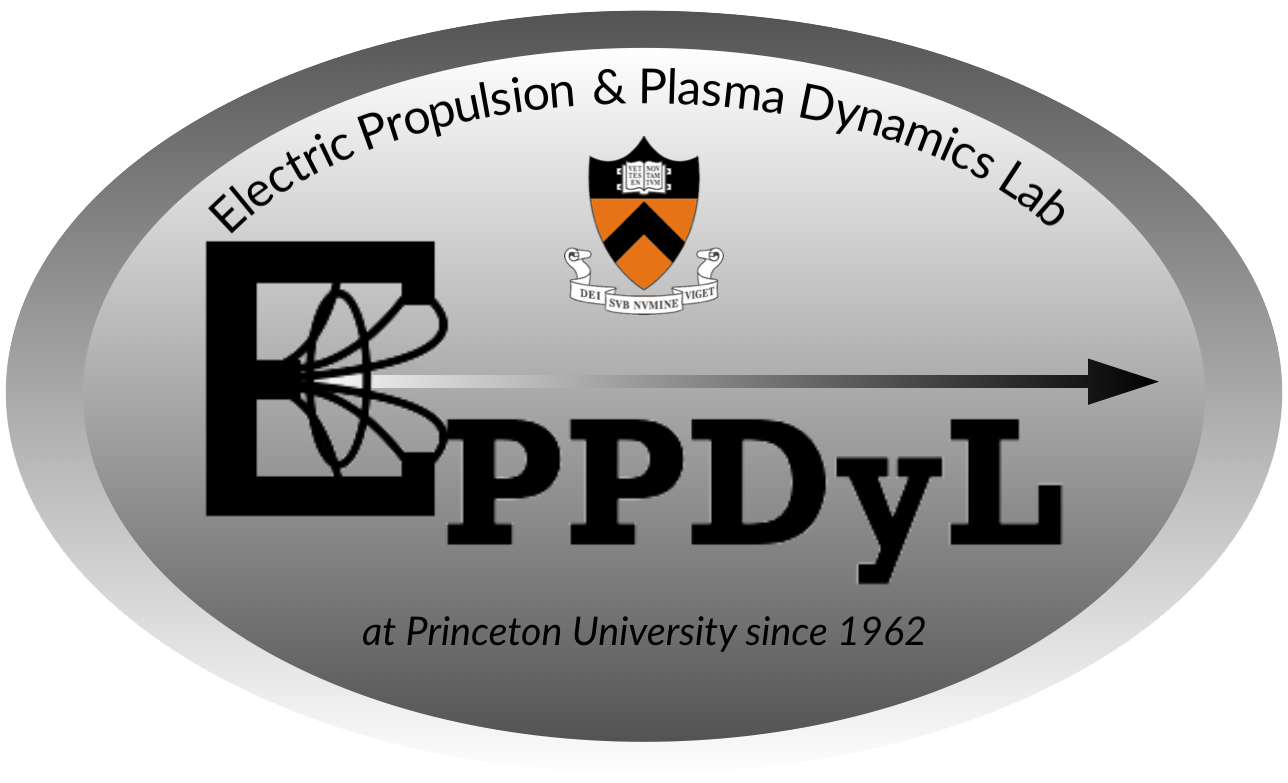Microwave Electrothermal Thruster

Introduction
A microwave electrothermal thruster (MET) uses microwave energy to sustain a plasma in a flowing gas, this energy is subsequently converted into thrust as the gas expands through a nozzle. The fact that a microwave sustained plasma can be created without electrodes and can be maintained away from the material surfaces of the thruster, may allow for significant reductions in thruster erosion and tremendous improvements in overall lifetime, compared with arcjets. A prototype thruster has been build at EPPDyL, which is based on the design developed jointly by Penn State University and RSI Corporation. This thruster utilizes a cylindrical resonant cavity at 2.45 GHz with a free-floating plasma inside the cavity and it has operated successfully at power levels of up to 1 kW with He, Ar, N2 and air as propellants. From a fundamental point of view the maximum average temperature that can be achieved for a given propellant in a microwave electrothermal thruster is limited by the reflection of microwave power from the plasma, an effect that gets more pronounced as the temperature and electron density of the gas increases. The goal of this research is to add another microwave cavity to this thruster, which would sustain a second plasma in the supersonic part of the flow. The energy coupled to the flow from this supersonic plasma should further increase the thrust and specific impulse of this thruster. The thrust increase will be quantified, both by measuring the thrust of the MET directly and by studying the velocity and temperature distributions inside the MET using laser induced fluorescence (LIF).
Accomplishments
A computational model has been developed for simulating a supersonic plasma in the thruster. This model captures the non-linear interaction between the microwave field and the fluid by solving the complete system of both the Maxwell equations and the Navier-Stokes equations. A conservative finite volume numerical discretization is used to integrate the Navier Stokes equations in time until a steady state is reached. The finite element method is used to solve the equations that describe the electromagnetic field. A microwave sustained plasma in a 200 mg/sec, supersonic argon flow has been studied using this model and results were presented at the AIAA Aerospace Sciences Meeting in Reno in January 2001. There is a link to this paper below.
Relevant Publications
- Numerical simulation of microwave sustained plasmas in supersonic argon flow - 39th AIAA Aerospace SciencesMeeting and Exhibit (2001)
- Supersonic energy addition for the nuclear thermal rocket
- Study of the relative advantages of supersonic energy addition for different propellants
- Supersonic energy addition using a molecular absorber - 34th AIAA/ASME/SAE/ASEE Joint Propulsion Conference and Exhibi (1998)
Contact
Former students:- Vincent Chiravalle
